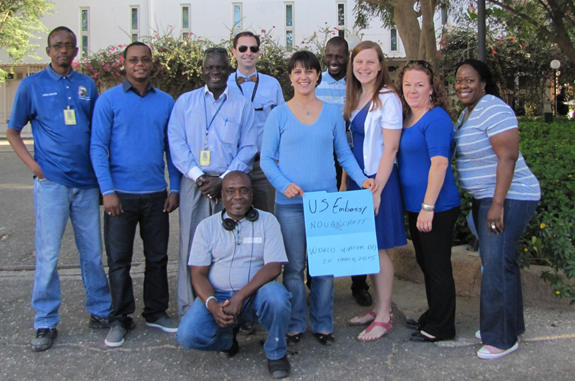Case Studies
Case Study: Plastic Recycling
In Yerevan, the municipal solid waste collection and disposal service does not yet sort or treat waste. Wastewater and pollutants are discharged directly into rivers, and polyethylene terephthalate (PET) plastic is one of the main pollutants in the country’s rivers. Environmental pollution associated with plastic waste in Armenia is currently estimated at 5,000-6,000 tons annually, and continues to grow.6
Case Study: Lighting Retrofitting
U.S. Embassy Helsinki’s Malmi warehouse was retrofitted with LED light fixtures in 2011. Serving as post’s primary warehouse, Malmi is a 4,000 m2 (43,000 ft2) facility that houses storage and mail processing, and serves as a staging area for construction projects.
Case Study: Energy Management
Most buildings supporting the U.S. Embassy in New Delhi are over 40 years old; however, through green initiatives, the Embassy has reduced its energy consumption and CO2 emissions by 2,490 metric tons annually—the equivalent of over 500 cars.
Case Study: Bike Share Program
Employees at the Department have many options when traveling in the Washington Capital region, including motor pool vehicles, organization vehicles, Department shuttles, taxis, mass transit (i.e., the Metro bus and rail system), walking, and now, loaner bicycles. The Department provides 10 bicycles free of charge to Department employees and contractors as a healthy and environmentally-friendly alternative means of transportation.
Case Study: Water Autonomy
Monrovia’s climate offers abundant rainfall, with nearly 500 cm (200 inches (in)) of rain per year. This, coupled with estimated long-term costs of water delivery, led the design team to investigate the feasibility of rainwater harvesting. The project site had no access to a water well or municipal supply and therefore would require water to be trucked to the facility from a local stream at a cost of approximately $0.06/L ($0.02/gal), with some security risk.
Case Study: Water Management
According to the World Health Organization (WHO), Jordan “has one of the lowest levels of water resource availability, per capita, in the world,”7 and water may become an even greater issue as the impacts from population growth and climate change become apparent. U.S. Embassy Amman has addressed this critical issue through a variety of efficiency initiatives:


